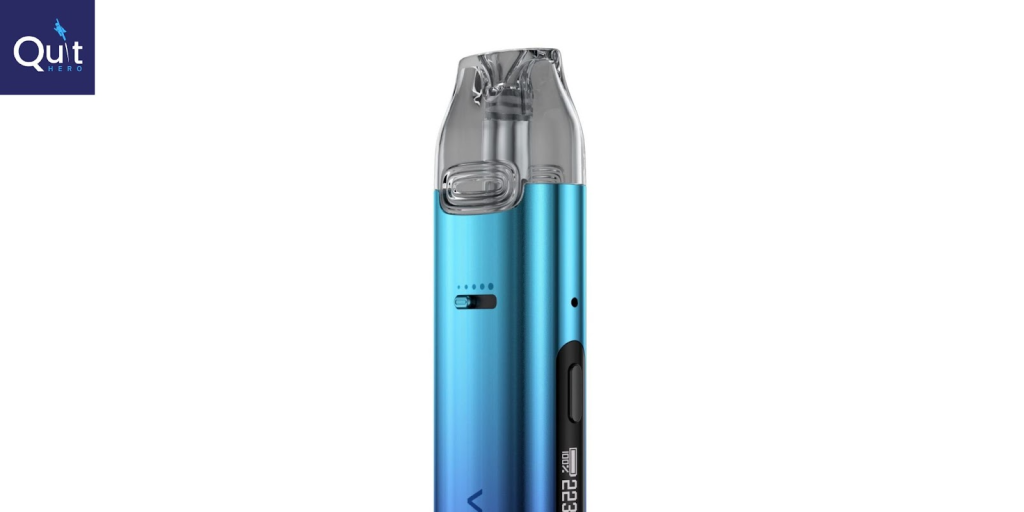
Quitting smoking is a deeply personal journey, and there’s no single right way to do it. For many Australians, Nicotine Replacement Therapy (NRT) has played an important role in managing withdrawal symptoms and staying on track with their quit plan. Whether it’s gum, patches, lozenges, or vaping products that provide a controlled dose of nicotine without the harmful effects of tobacco smoke, the goal is to support people through the toughest moments of quitting.
In recent years, vape devices have also entered the conversation, with users exploring tools like pharmacy-sourced vaping products as part of their transition away from smoking. While vaping is not risk-free and isn’t approved by the TGA as a first-line quit method, some people have found it helpful in reducing or quitting cigarettes. The key is to stay informed, seek professional support, and use these tools responsibly.
Let’s explore how nicotine replacement options can be used to support your quit journey.
Why Is Nicotine Replacement Therapy a Key Part of Your Quit Plan?
Nicotine is a highly addictive substance. When someone stops smoking, the body reacts to the sudden lack of nicotine with withdrawal symptoms like irritability, cravings, anxiety, and trouble focusing. These symptoms can be overwhelming and often lead to relapse.
NRT works by delivering a smaller, controlled amount of nicotine without the thousands of harmful chemicals found in tobacco smoke. This gives your body time to adjust gradually while you focus on breaking the habit and behavioural cues associated with smoking.
Common NRT options include:
- Nicotine patches – Worn on the skin and release a steady dose of nicotine throughout the day.
- Nicotine gum and lozenges – Used as needed when cravings hit, helping you stay in control.
- Inhalators or nasal sprays – Mimic the hand-to-mouth motion of smoking, which can help some people manage the physical habit.
Each method has its own strengths. For example, patches offer consistency, while gum gives you flexibility. Some people use a combination of products, such as a patch for all-day support and gum to manage breakthrough cravings.
If you’re unsure where to start, a conversation with your GP or pharmacist can help you decide which approach fits your needs best.
How to Use NRT Effectively
Success with NRT often depends on using the product properly and consistently. Here are some tips to improve your chances of success:
- Start with the correct dose: If you were a heavy smoker, a higher dose might be appropriate. Underdosing can lead to stronger cravings and withdrawal.
- Follow instructions carefully: Chewing gum too fast or not rotating patch sites can reduce effectiveness.
- Commit to a plan: Set a date to quit smoking and stick to it. Let NRT support that goal rather than relying on it indefinitely.
- Track your progress: Writing down your triggers and wins helps you stay motivated.
- Combine NRT with behavioural support: Quitlines, text support, and apps can make a significant difference.
What About Vaping?
In Australia, vaping is a complex topic. Some adult smokers who haven’t had success with other methods have turned to regulated nicotine vaping products to cut down or quit cigarettes. It’s important to recognise that vaping is not harmless, but under strict medical supervision, it can be a temporary strategy for certain individuals.
Products like therapeutic vaping devices are sometimes considered in this context, particularly for people who have tried other options without success. However, any use of pharmacy-sourced vaping products must be legally prescribed in Australia, and they should never be seen as a lifestyle accessory or used by non-smokers or young people.
Always consult your healthcare provider before starting a vaping product, and make sure you understand the risks and regulations involved. Transitioning away from cigarettes should be the priority, with a plan to taper off nicotine completely over time.
Building a Personalised Quit Strategy
Every person’s quit journey is different. Some people go cold turkey, others use NRT or prescription medications, and a few explore medically supervised vaping. Whatever your approach, creating a personalised plan is key.
A well-rounded quit strategy includes:
- Understanding your triggers and having ways to manage them
- Accessing professional guidance from a GP, counsellor, or quit support service
- Using tools like nicotine patches, lozenges, or pharmacy-sourced vaping products if part of a medical plan
- Celebrating small wins and progress
You might hit setbacks, and that’s okay. The goal isn’t perfection, but progress. Each smoke-free day is a win for your health and future.
The Role of Support in Your Quit Plan
You don’t have to go through this alone. Whether it’s a friend, a support group, or a helpline, having people to talk to makes a difference. Medical professionals, pharmacists, or quitline coaches can guide you through the process, offer motivation, and help you stay accountable.
Set clear goals. Track your progress. Celebrate small wins. If you’re using products like therapeutic vaping, try setting a timeline to taper your use. This helps keep you moving toward your goal instead of staying stuck in the middle ground.
Conclusion
Quitting smoking is never easy, but with the right tools and support, it’s absolutely achievable. Nicotine Replacement Therapy has helped thousands of Australians take control of their health, reduce their cigarette use, and eventually quit for good. Whether you use patches, gum, or under-the-guidance nicotine vaping tools, success starts with the decision to try and the willingness to keep going even when it gets tough.
Support services like Quit Hero offer valuable tools, resources, and information to help Australians stay informed and supported during their quit journey. It’s not about quitting perfectly. It’s about not giving up.